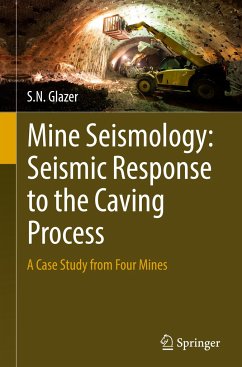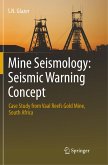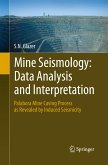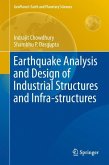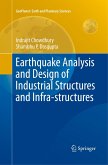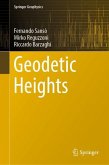This book presents the results of seismic data analysis and interpretation based on nearly one million seismic events. This seismicity was induced by the caving process in four copper mines, each located on a different continent. The book not only serves as an interpretation guide, it also illustrates the benefits of evaluating data from different mines:How to establish which seismic data base is faulty and why
The formation of a universal seismic response to the caving process
Indisputable evidence that hydro-fracturing improves underground safety
This book invites discussion on more general aspects of research, such as:
Basic research, applied research and implementation
Predicting mine-induced seismic events
Quantitative versus qualitative seismology
Research versus pseudo-research
What is genuine research?
[In the Parlabora Mine] Stefan has demonstrated that [the] use of the seismic system was a very practical means of monitoring the progression of the cave up to and beyond break through into the open pit above. The seismic system was vital in drawing up the undercutting and seismic protocols and determining the maximum potential seismic hazard level. Peter Townsend Retired Mine Manager and Consultant
I consider Stefan the pioneer of using microseismic data to provide understanding of the mechanism and progress of cave mining. Science has advanced considerably since the use of less than reliable extensometers to monitor the cave back position and Stefan was leading this advance. (...)This book provides a lot of useful insight[s] in how we can best understand the data that we (...) gather and how to change this data into useful information. Neil Hepworth C. Eng, MIMMM, Geomin Consultorio - Brazil. Consultant Mining and Geotechnics
Stefan mine seismology trilogy is (...) a comprehensive tutoring on how to analyse and interpret mine induced seismicity. This coaching is based on multiple practical examples (...) presented from the problem to be solved [with] input data tests followed by analysis and interpretation. This last is presented with many details that explain the whole process. Mahdi Bayuargo, ST, MAScPT. Duaem Gada Bayuagus Managing Director
The formation of a universal seismic response to the caving process
Indisputable evidence that hydro-fracturing improves underground safety
This book invites discussion on more general aspects of research, such as:
Basic research, applied research and implementation
Predicting mine-induced seismic events
Quantitative versus qualitative seismology
Research versus pseudo-research
What is genuine research?
[In the Parlabora Mine] Stefan has demonstrated that [the] use of the seismic system was a very practical means of monitoring the progression of the cave up to and beyond break through into the open pit above. The seismic system was vital in drawing up the undercutting and seismic protocols and determining the maximum potential seismic hazard level. Peter Townsend Retired Mine Manager and Consultant
I consider Stefan the pioneer of using microseismic data to provide understanding of the mechanism and progress of cave mining. Science has advanced considerably since the use of less than reliable extensometers to monitor the cave back position and Stefan was leading this advance. (...)This book provides a lot of useful insight[s] in how we can best understand the data that we (...) gather and how to change this data into useful information. Neil Hepworth C. Eng, MIMMM, Geomin Consultorio - Brazil. Consultant Mining and Geotechnics
Stefan mine seismology trilogy is (...) a comprehensive tutoring on how to analyse and interpret mine induced seismicity. This coaching is based on multiple practical examples (...) presented from the problem to be solved [with] input data tests followed by analysis and interpretation. This last is presented with many details that explain the whole process. Mahdi Bayuargo, ST, MAScPT. Duaem Gada Bayuagus Managing Director

